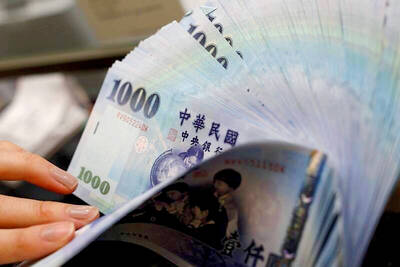Thai Prime Minister Samak Sundaravej told Thais to put up with soaring rice prices yesterday because poor farmers in the kingdom were benefiting from the record highs.
“If you sacrifice and pay more for rice — a bit more, not much more — it will benefit farmers,” he said during his weekly address to the nation.
The benchmark Thai variety, Pathumthani fragrant rice, was priced on April 9 at US$956 per tonne for export, up about 50 percent from a month earlier, the Thai Rice Exporters Association said in its price survey.
International demand for Thai rice has soared after other top exporters Vietnam and India imposed limits on exports to ensure domestic supply.
This has pushed up domestic rice costs in Thailand, which have soared in line with the export price.
Samak said the government understood that rising food and fuel costs were taking their toll on Thai families, and reassured people that the government was looking into ways of boosting incomes. He did not elaborate.
Samak has previously urged the public and producers not to hoard rice, promising there would be enough for everyone in Thailand, where the revered grain is eaten three times a day and is farmed by 3.6 million families.
Samak heads the People Power Party, which swept to power in elections in December largely because of the backing of the rural poor in Thailand’s northeastern region.
Meanwhile, Pranee On-lamoon gazes anxiously at her newly planted rice paddy, hoping to cash in on the price rally.
Like many farmers in the heart of Thailand’s main rice growing region, Pranee was spurred to grow a rare third crop of the staple grain after rice prices reached historic highs.
“It’s a risk, but it is the one golden chance I have,” Pranee, 56, said as she prepared to work on her 6 hectare paddy field in the province of Suphan Buri, just north of Bangkok.
“I have been a farmer since I was born and I’ve never seen prices rise so high,” the mother of two said.
But despite their back-breaking work, farmers such as Pranee might be the last to reap profits from high rice prices and the first to pay the bill from high planting costs and the risk that rice prices might tumble before harvest time in around June.
Most Thai farmers missed the chance to profit from prices as high as 17,000 baht (US$541) a tonne this month because they had to sell most of their crop after harvest in November due to a lack of storage on their own farms.
Whether Pranee and her neighbors get to see the benefits of their extra work is another matter.
She believes a local miller is still hoarding the rice she sold in November in the hope of selling later to exporters at a higher price — a charge also levelled at millers by the government but denied by the industry.
“I got only 7,000 baht per tonne when I sold my rice,” 42-year-old farmer Kasem Laosittiwaro said.
“I will grow another crop but I don’t know if I can get 17,000 baht per tonne when I sell my rice in June after the harvest,” he said, referring to the current price for white rice paddy sold to millers for processing.
Producing a third crop is not the easy money it might seem at first glance.
The cost of fuel and fertilizer have risen steeply over the last year, pushing many farmers such as Kasem, who failed to get a much higher price for their November crop, deep into debt.
For decades, rice paddy prices have been around 6,000 baht per tonne, propped up by a state minimum price scheme to prevent big fluctuations around harvest time.
This year, the domestic price has surged to 17,000 baht due to strong overseas demand.
But most farmers fear they will never be able to get that price and will struggle just to cover their fixed costs estimated at 5,000 baht a tonne.
“I’m not sure whether I could get any profit from selling prices at these historic highs as my costs have risen, leaving very little profit for us,” said 53-year-old Wattana Boonyatim, who invested heavily in seed and fertilizer for his third crop.
In Vietnam, rice farmers are also feeling the pinch of high fertilizer costs which have eaten into their profits.
“This year’s profit is not good as fertilizer prices have jumped strongly,” Ha Van Duc said at his farm in Vietnam’s Mekong Delta.
With fertilizer and rice seed prices almost doubling in the last 12 months, the Thai government has pledged to import 20,000 tonnes of fertilizer.
Farmers say this is a drop in the ocean in a country that uses up around 4.5 million tonnes of fertilizer per year.
“The amount is tiny compared to what we consume per day,” Wattana said.
Farmers are also aware that less fertilizer means less rice.
“Without fertilizer we can not get higher yields which means we suffer losses,” said 61-year-old Chin Sudsaward, who had to borrow money for fertilizer.
Another factor playing on the minds of most farmers in Thailand is the increased cost of land, with landlords seeing the high global prices as a chance to demand higher payments.
In response, farmers want the government to set a floor price of more than 10,000 baht per tonne in case global prices have fallen by the time the third crop is harvested around June.
“We just want to have a choice,” Kasem said. “If prices fell I need to be able to sell to the government at a price where I can afford to pay off my debts.”
The government, which stopped its annual intervention scheme for the first time in decades this year due to the soaring global prices, has not responded to the request other than to say it wants the market to play its role.

Merida Industry Co (美利達) has seen signs of recovery in the US and European markets this year, as customers are gradually depleting their inventories, the bicycle maker told shareholders yesterday. Given robust growth in new orders at its Taiwanese factory, coupled with its subsidiaries’ improving performance, Merida said it remains confident about the bicycle market’s prospects and expects steady growth in its core business this year. CAUTION ON CHINA However, the company must handle the Chinese market with great caution, as sales of road bikes there have declined significantly, affecting its revenue and profitability, Merida said in a statement, adding that it would

MARKET LEADERSHIP: Investors are flocking to Nvidia, drawn by the company’s long-term fundamntals, dominant position in the AI sector, and pricing and margin power Two years after Nvidia Corp made history by becoming the first chipmaker to achieve a US$1 trillion market capitalization, an even more remarkable milestone is within its grasp: becoming the first company to reach US$4 trillion. After the emergence of China’s DeepSeek (深度求索) sent the stock plunging earlier this year and stoked concerns that outlays on artificial intelligence (AI) infrastructure were set to slow, Nvidia shares have rallied back to a record. The company’s biggest customers remain full steam ahead on spending, much of which is flowing to its computing systems. Microsoft Corp, Meta Platforms Inc, Amazon.com Inc and Alphabet Inc are

RISING: Strong exports, and life insurance companies’ efforts to manage currency risks indicates the NT dollar would eventually pass the 29 level, an expert said The New Taiwan dollar yesterday rallied to its strongest in three years amid inflows to the nation’s stock market and broad-based weakness in the US dollar. Exporter sales of the US currency and a repatriation of funds from local asset managers also played a role, said two traders, who asked not to be identified as they were not authorized to speak publicly. State-owned banks were seen buying the greenback yesterday, but only at a moderate scale, the traders said. The local currency gained 0.77 percent, outperforming almost all of its Asian peers, to close at NT$29.165 per US dollar in Taipei trading yesterday. The

The US overtaking China as Taiwan’s top export destination could boost industrial development and wage growth, given the US is a high-income economy, an economist said yesterday. However, Taiwan still needs to diversify its export markets due to the unpredictability of US President Donald Trump’s administration, said Chiou Jiunn-rong (邱俊榮), an economics professor at National Central University. Taiwan’s exports soared to a record US$51.74 billion last month, driven by strong demand for artificial intelligence (AI) products and continued orders, with information and communication technology (ICT) and audio/video products leading all sectors. The US reclaimed its position as Taiwan’s top export market, accounting for